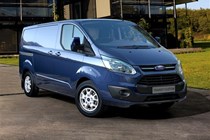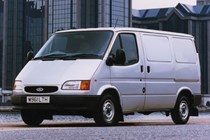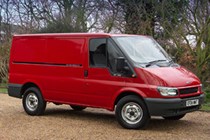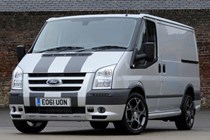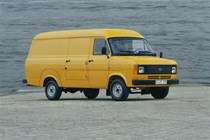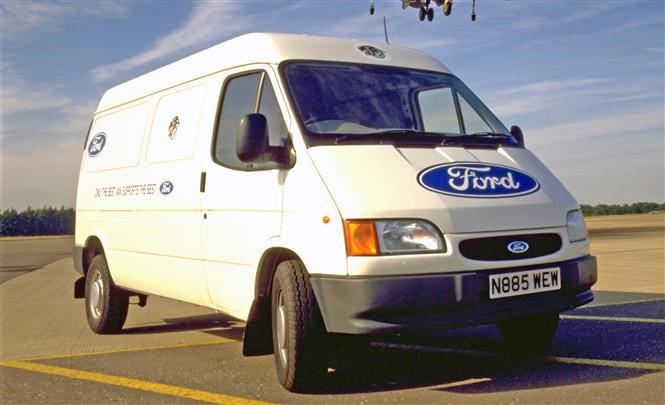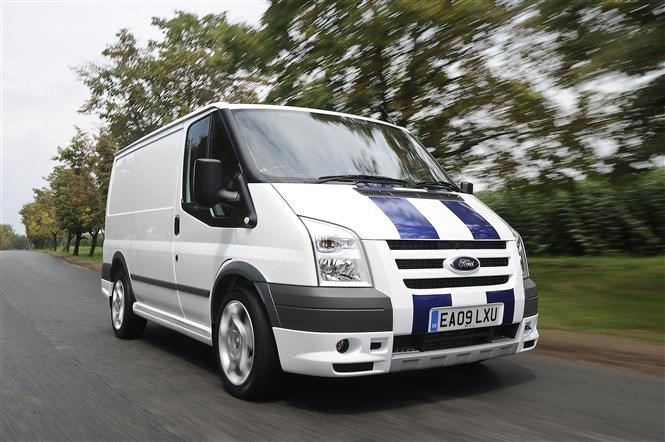Also read: Parkers Guide to the Volkswagen Transporter
Everybody’s familiar with the name ‘Transit’. It’s the most common brand of commercial vehicle on our roads, with the Ford Transit being well liked by users and fleet operators alike. There are now four ‘Transits’ on sale; the Ford Transit Courier, Ford Transit Connect, Ford Transit Custom and the Ford Transit.
The ‘Transit’ name was first introduced in Germany in 1953, but it is seen as a completely separate development than the vehicle that was introduced to the UK in 1965. It was an immediate success, with it being praised for its flexibility, comfort and ease of use.
As a result of its popularity, Ford dubbed it ‘the backbone of Britain’. Over seven million Ford Transits have been built to date, and the range shows no signs of stopping. So, if you’re a little unfamiliar with the name, or just want to find out more, here’s the Parkers Guide to the Ford Transit.
Ford Transit Mark I (1965-1978)
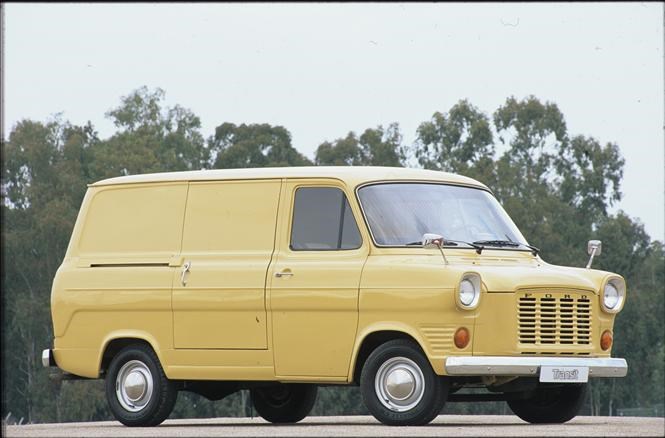
This, the first Transit that hit the UK’s shores, was a revelation. With American styling and a wide body, it offered lots of room compared to its competitors. Many of the parts came from Ford’s car range, making it much more refined, simpler to care for and easier to drive and legend had it that more Ford Transits were used by 1960’s criminal gangs than any other vehicle. One of the key reasons for its success was the wide variety of body styles on offer. Buyers could choose from pick-ups, minibuses, panel vans, crew-cab versions and more. Both petrol and diesel engines were on offer, with the diesel versions having a distinctive longer nose. |
Ford Transit Mark II (1978-1986)

The Mk2 Transit was a face lifted version of the original generation. It got a new nose and an updated interior. The mechanicals also received some modernisation, with the introduction of the Pinto engine from the Cortina. The first of the ‘fast’ Transits also appeared, packing the Essex V6. In 1984 the Transit received a few further upgrades, including a direct injection diesel engine and some minor trim changes. Numerous body styles were again on offer, and included derivatives such as bus, chassis cab and the typical van. Because of the vast array of options, the possible combination of Transit specification was practically limitless. An automatic transmission was also available for the first time. |
Ford Transit Mark III (1986-2000)
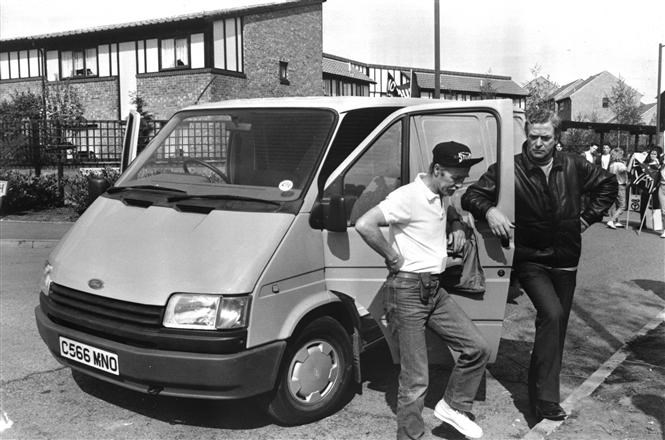
The third generation Transit marked the debut of an all-new Transit platform. With its windscreen distinctively slanted to match the angle of the bonnet, and a simple box-like design, it became an easily recognisable sight on Britain’s roads. Underneath, short wheelbase versions got a modern independent front suspension system, improving the ride quality and handling. Load space was also increased, while access and visibility were improved. Engines were much the same as before, with both petrol and diesels on offer, although the 3.0-litre Essex V6 was replaced with the more modern 2.9-litre fuel-injected Cologne unit. In 1991, the Ford Transit received a major makeover, while retaining its smiley face. All that obviously distinguishes the two, for the most part, is slightly more rounded front headlamps.
There were some interesting changes, however. Fully independent front suspension was introduced across the whole range, while long-wheelbase models were now available with a single-wheel rear axle instead of a paired rear wheel setup. This meant more room in the back of the already spacious Transit. A turbocharged diesel engine was also offered for the first time. The Mk3 Transit received another facelift and a number of improvements in 1994. It got a new dashboard, front end styling, and updated engines. What was notable, however, was the introduction of options such as air-conditioning, central locking, airbags, electric windows and electric mirrors. These creature comforts pointed the way forwards for the Transit, with it becoming increasingly more comfortable and capable. It was available with both petrol and diesel engines and a special 30th anniversary edition, called the Hallmark, was launched in 1995. |
Ford Transit Mark IV (2000-2014)
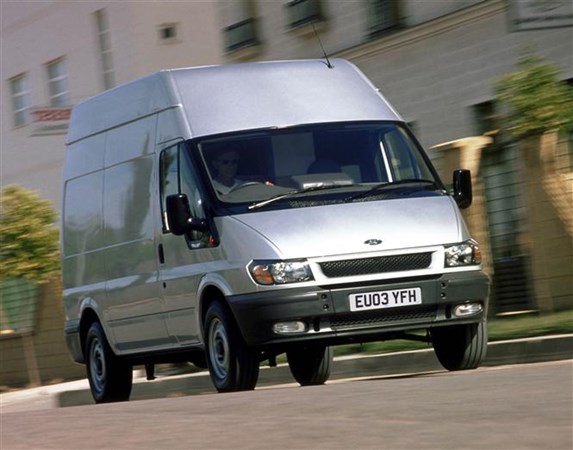
Introduced in July 2000, the Mk4 model was the third all new platform in the Transit range. It was available in either front- or rear-wheel drive, a first for a Transit. This enabled buyers to have the choice between a lower loading height and more space, or improved towing and load carrying capabilities. Modern ‘Duratorq’ diesel engines were introduced and a range of other new features and technologies were also fitted to the Transit, such as the ‘Durashift’ automatic transmission. The Transit also received sharp styling that mirrored that featured on the company’s cars of that period, such as the Focus. In 2005, the five millionth Transit rolled off the production line. Read on: Ford Transit Mark IV review.
Launched in 2006, the facelifted Ford Transit Mk4 featured a host of upgrades and improvements. As well as the almost inevitable facelift, the interior was revamped to make it more comfortable and ergonomic. New TDCi engines were introduced, improving economy and emissions. This generation also marked the introduction of the Sport Van. This featured ‘sports’ styled trim, racing stripes, large alloy wheels and other additional details. This generation of Transit has gone on to be one of the most popular and reliable vans on sale. Read the Ford Transit Mark IV (facelifted) review. N.B. For 2012 onwards, the ‘Ford Transit’ name is transformed into a brand. The short and medium wheelbase Ford Transits were succeeded by the Ford Transit Custom. Long and extra-long wheelbase were replaced in 2014 by the Ford Transit Mark 5. An entirely new vehicle, the Ford Transit Courier, is launched in 2014, filling the gap between the Ford Fiesta van and the Ford Transit Connect. An all new Ford Transit Connect is added in 2013. |
Ford Transit Mark 5 (2014-)
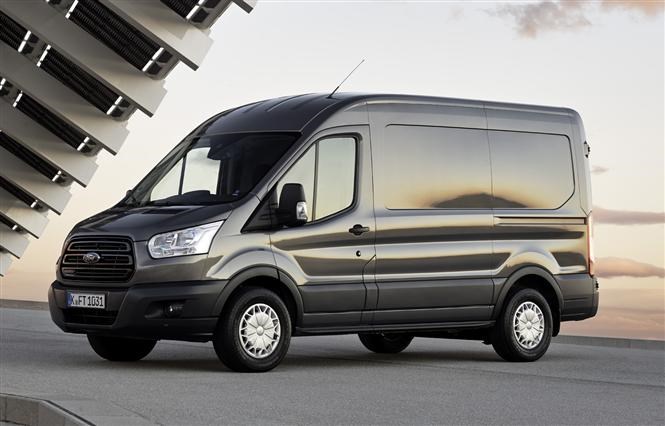
Launched in 2006, the Mk5 Transit featured a host of upgrades and improvements. As well as the almost inevitable facelift, the interior was revamped to make it more comfortable and ergonomic. New TDCi engines were introduced, improving economy and emissions. This generation also marked the introduction of the Sport Van. This featured ‘sports’ styled trim, racing stripes, large alloy wheels and other additional details. This generation of Transit has gone on to be one of the most popular and reliable vans on sale. Read the full review here. |
If you’re in the market for a van, then why not check out the Parkers comprehensive van review database. You can also visit the Parkers Van news and advice page for all the latest van-related updates and information, as well as browse vans that are currently for sale
Just so you know, we may receive a commission or other compensation from the links on this website - read why you should trust us.




